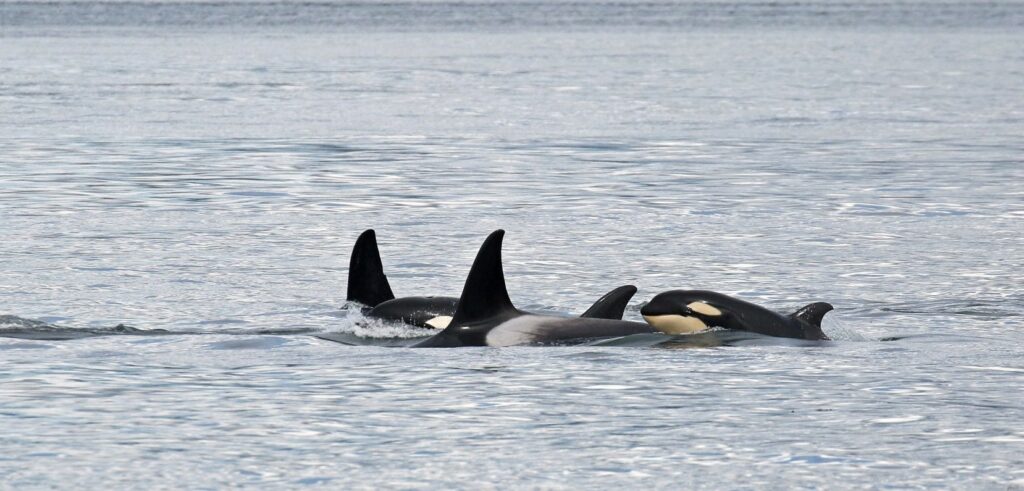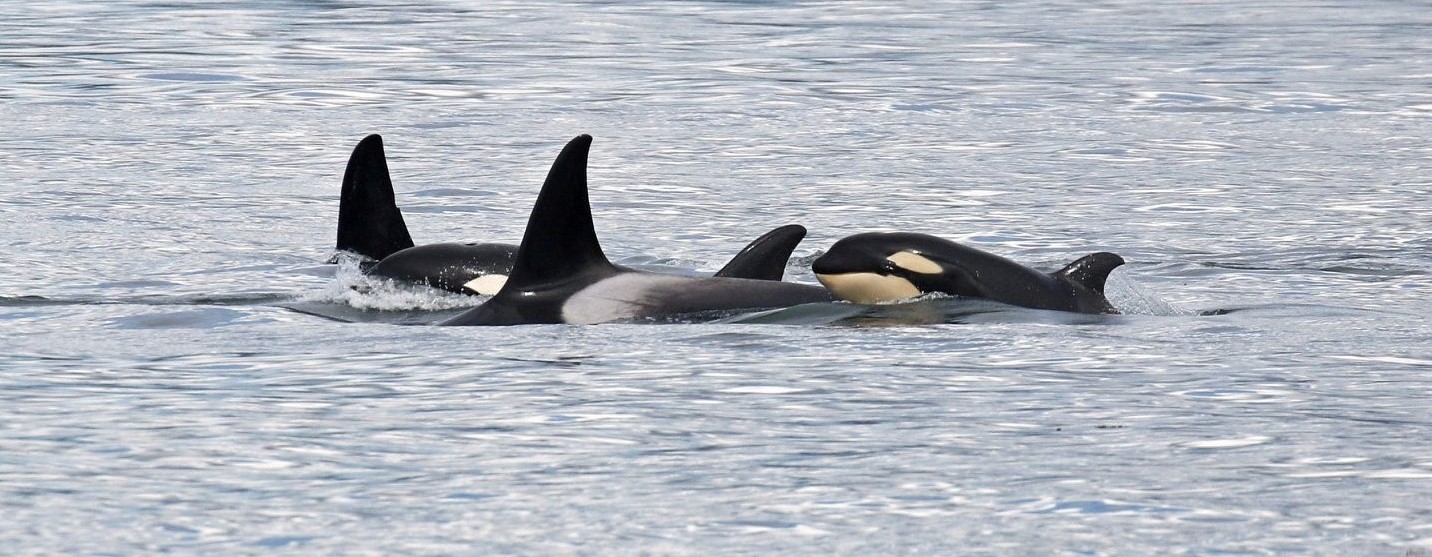
Even our most nautically inclined guests sometimes wonder this. We understand the confusion! In Canadian waters alone, there are 10 families, 40 genera, and 37 species of cetaceans – the name of the order that contains whales, dolphins, and porpoises. In fact, scientists think that there are many remaining that are likely still yet to be discovered. Cetacea are often hard to identify because of their behaviour in the presence of humans, their size, and the areas they like to inhabit, which are often quite remote.
The differences? In short, they mostly come down to the animal’s size and mouth shape. All have flippers, tail flukes, blubber, and blowholes, but they can be categorized further into one of the two different groups of the species: toothed (Mysticeti) and baleen (Odontoceti).
“Whale” is, more often than not, used as a blanket term for all Cetacea. When we think of whales, however, we are probably thinking of baleen whales: the world’s most massive creatures, with baleen plates that filter small fish and sea creatures into their mouths. However, we may also think of killer whales, which are actually porpoises because of their teeth and nose shape. Porpoises have flat, spade shaped teeth and blunt noses. Harbour and dall porpoises (or a hybrid combination of the two… long story!) are another kind that are fairly abundant in the Salish Sea. These are commonly mistaken for dolphins and not considered to be a part of the cetacean order, since they are only about the size of a Saint Bernard!
Dolphins (Delphinidae) are a family of toothed whales, distinguished by pointed beaks and many conical teeth. Don’t be fooled by their sweet faces! Like killer whales, they are carnivorous hunters, who will chase and track their prey instead of waiting for it to swim into their open mouths. Dolphins prefer warm water, and so are infrequent visitors to Vancouver Island waters. You may occasionally see a Long or Short-Beaked Common dolphin or even a Pacific White-Sided dolphin, though even those are rare.
Still confused? Ask one of our knowledgeable naturalists while you’re on board, and they’ll help you figure out what you’ve seen or hope to see!
Works consulted + additional reading:
Allen, Sarah G., et al (2011). Field Guide to Marine Mammals of the Pacific Coast: Baja, California, Oregon, Washington, British Columbia. University of California Press, (95-385).
“Cetacean Species and Observation” (March 10, 2022). The Government of Canada. https://www.dfo-mpo.gc.ca/species-especes/mammals-mammiferes/cetacean-cetaces/info/index-eng.html
Naughton, Donna, and Canadian Museum of Nature, Canadian Museum (2012). The Natural History of Canadian Mammals. Toronto: University of Toronto Press, (600-701).
